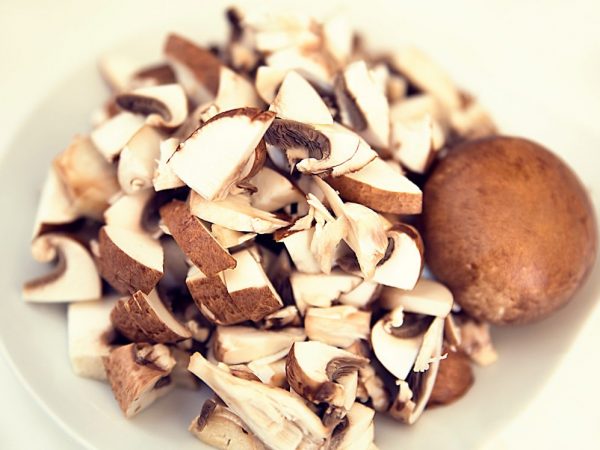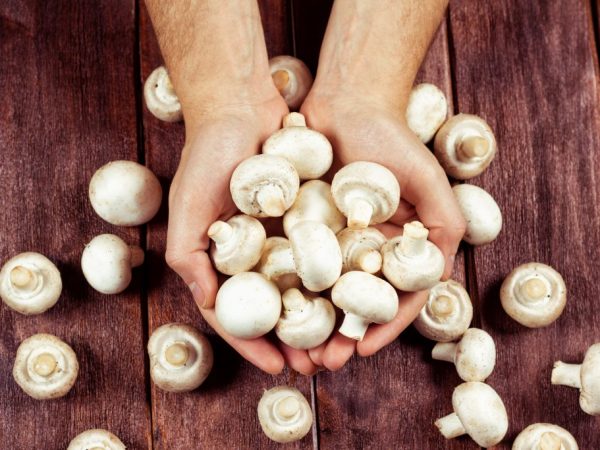Chitin in mushrooms
Chitin is part of the shells of mollusks, it is found in the shells of crabs, shrimps, lobsters, and you can also find chitin in mushrooms (including microscopically small ones), yeast and some algae. It also participates in the formation of the external skeleton of insects (butterflies, ants, etc.)

Chitin in mushrooms
What it is
Chitin is a pinkish transparent substance that is associated with cellulose and is referred to as a nitrogen-containing polysaccharide. Such an element is a strong natural sorbent, acts as the basis of the skeleton and outer covers of insects, arachnids and crustaceans. Those. all those who in biology, or rather in zoology, are referred to as arthropods.
The properties of the substance are extremely diverse - from use in medicine to use in agriculture.
Agricultural applications
The content of chitin in the cell walls of fungi is quite high. Chitosan is obtained from chitin by autoproteolysis or autoenzymolysis. These methods of obtaining the required compound are based on the use of an active enzyme complex of the raw material itself.
Chitin is widely used in agriculture and helps in the fight against root nematodes. However, the mechanism of its action is not well understood. This organic compound is composed of polysaccharides, which are used by plants to feed and build cell walls. Due to these properties, chitin is used to create plant nutrition. This application is also explained by its antifungal properties, which make it possible to use it in the agricultural and environmental industries.
The substance is effective against root nematodes, and is also used to eliminate problems with the soil, prevents the damage to the root systems of legumes by fungal microorganisms that cause root rot and lead to the death of the beans.
The introduction of chitin into the soil together with hemicellulose reduces the toxicity of pesticides in the soil.
Effectiveness against root nematodes is achieved by enhancing the activity of bacteria and actinomycetes in the natural composition of the soil, which destroy the egg shells of the parasites.
The use of chitin in soil cultivation reduces the population of ectoparasitic nematodes in the soil itself and in the root systems of clover. Chitin helps to eliminate gall nematodes "living" on the roots of tomatoes in special formations - galls, and also reduces the number of phytonematodes that parasitize many vegetable crops.
Irina Selyutina (Biologist):
Chitosans (especially low molecular weight), unlike their original product, are water-soluble forms. For example, in the United States, the use of drugs based on chitosan is approved by the Environmental Protection Agency. Some chitosan-based drugs are capable of decomposition with the release of ethylene gas, which enhances the effect of the drug itself. As a result, a powerful root system is formed, more grains and a more powerful stem develop.In addition, the preparations stimulate the resistance of plants to stress (frost, drought, excess moisture). It also indirectly contributes to the fight against pathogens.
The substance is also suitable for combating fungal microorganisms in the soil. Chitosan protects plants from chemical reactions, has antiviral activity, inhibits the development of fungal spores, stimulates seed germination in the soil, and helps the intensive growth of plants.
Disadvantages of the substance
The downside is the high consumption of pure substance. To reduce the nematode population, it is necessary to introduce more than 10 tons per hectare of plantings, in order for the nematode population there to significantly decrease. Thus, it is best to use drugs that include this substance.
In agricultural practice, the following chitin-based preparations are widespread - Narcissus (chitosan 50%, 20% glutamic acid and 30% succinic acid), Chitosars (chitosan + salicylic acid + potassium phosphate, chitosan + arachidonic acid), Agrochit (low molecular weight chitosan lactate). The difference between drugs and pure substances lies in the deep penetration of polysaccharides into the soil and root system.
To combat parasites, you can use the drug "Clandosan".
Industrial use

Chitin in mushrooms has medicinal properties
Not only fertilizers and antiparasitic preparations contain chitin, but also many industrial compounds. It is a preservative for many foods and helps preserve the taste and aroma of food.
In New Orleans agriculture, chitosan is used to preserve beef and keep it fresh. In addition, the substance enhances the taste of food in a natural way, without changing the structure.
Irina Selyutina (Biologist):
In the food industry, chitosan has found its application due to its antimicrobial effect and absolute harmlessness. It is thanks to these qualities that chitosan is considered an excellent raw material for the so-called. "Intelligent packaging of a new generation." The appeal of this new packaging material is that it can be eaten with the contents.
Chitosan is also included in food films for wrapping ecological products. Due to this coating, food deteriorates much more slowly. Such packaging prevents the development of rot and fungal microorganisms.
Influence on the body
Due to the fact that the substance penetrates deeply into the root system of many plants, the question often arises - is chitin harmful to the human body?
The substance is absolutely safe and in no case violates the natural processes of the body.
It is found in mushrooms, seafood, and many medicines. The polysaccharide in the composition of medicines helps with atherosclerosis, obesity, and intoxication of the body.
Chitin, which is a part of mushrooms, has the following properties:
- normalizes lipid metabolism;
- heals dermatological ailments;
- helps with allergies;
- heals dermatitis;
- helps with arthritis;
- reduces pressure;
- eliminates high cholesterol content.
Chitosan is becoming more and more popular. So, in medicine, it is used for the manufacture of artificial skin, wound healing without scars, as a suture self-absorbable hypoallergenic material.
The advantage of the content of the substance in the composition of plants is the growth of bifidobacteria, strengthening of the intestinal mucosa, antitumor effect, elimination of toxins, slag masses, pathogenic enzymes from the body.
Conclusion
Chitin (and its derivatives) is an irreplaceable substance for the health of humans and animals. The polysaccharide is effective in the fight against many diseases, helps to preserve the freshness and taste of products, and improves the taste of meat.
The main purpose of chitin is its use in agriculture, namely, plant nutrition, soil enrichment, and the fight against parasites and pathogenic microorganisms.


